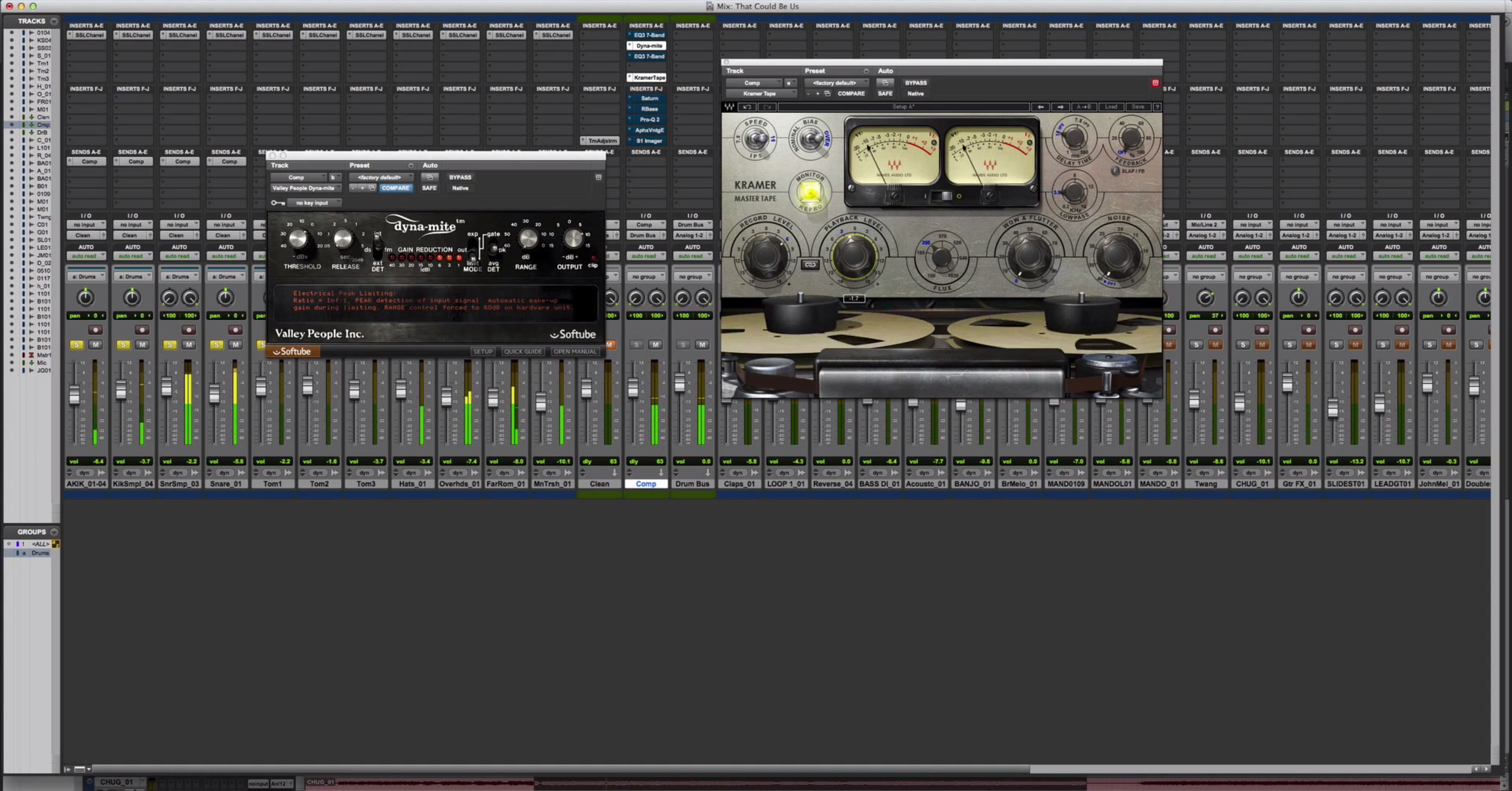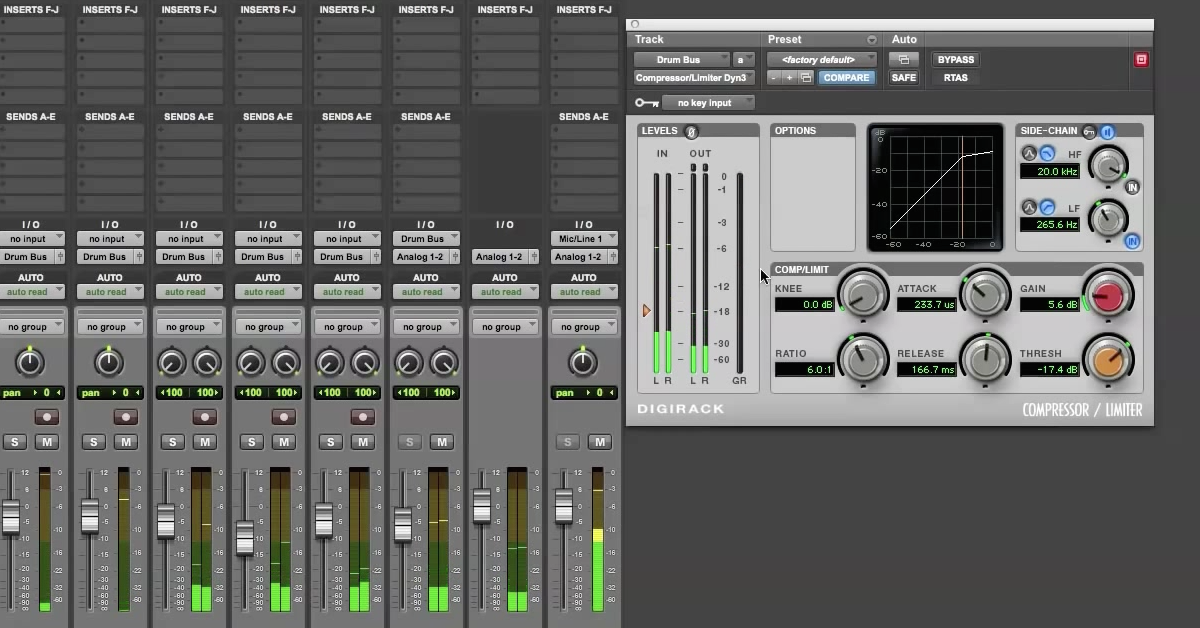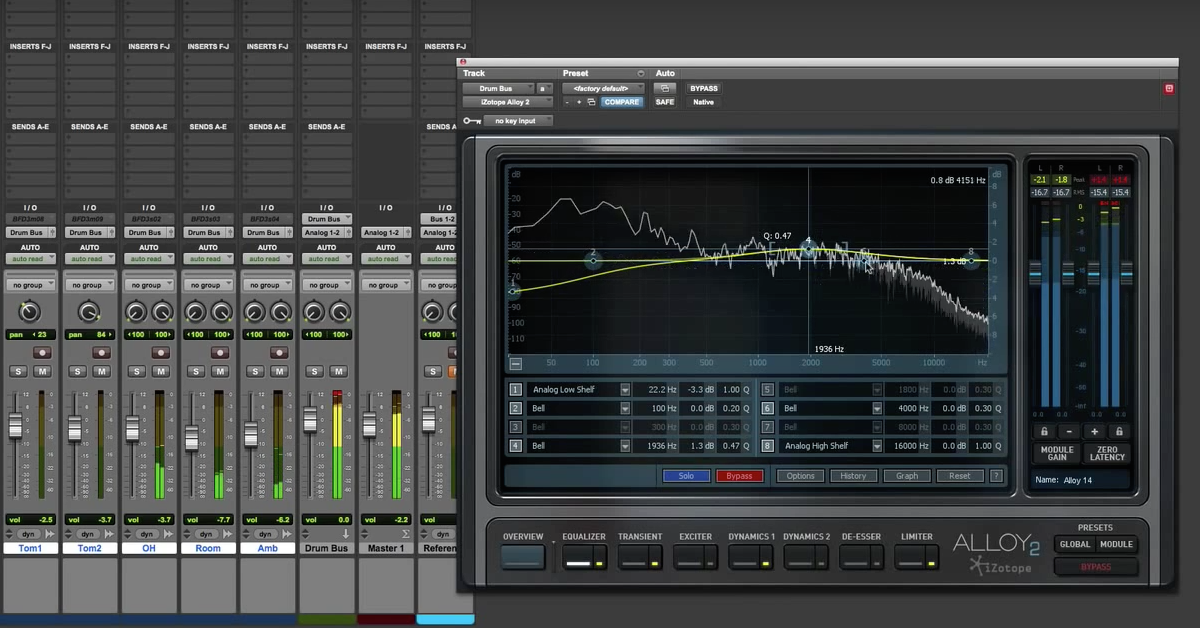6 Tips for Mixing Pop Music
Article Content
In my new course, I mix two pop songs from start to finish. It generally takes a good deal of patience, creative vision and understanding of audio fundamentals when mixing pop music. Here are some best practices if you’re hoping to give your pop mixes the energy, impact and clarity common to most commercial music releases.
1. Don’t Be Afraid to Process the Stereo Buss
Compression, Saturation, EQ and other processing that’s been applied to the stereo buss is simply part of the sound of popular music these days, and the top engineers mixing pop aren’t afraid to get expressive with it. The general consensus is that you should get your mixes to sound as close to their final state as you possibly can before sending off to a mastering engineer.
Now the caveat here is that you can definitely harm your mixes if you don’t know what you’re doing when processing the stereo buss, so I’d advise taking a conservative approach at first. As you begin to feel more comfortable and become more adept at identifying how these tiny brushstrokes improve the overall mix, gradually introduce more liberal applications of these processes.
Here are some tips:
Equalization
I generally start with an equalizer on my stereo buss before applying any other processing. With this EQ, I’ll hunt down unwanted frequencies that have ‘built up’ in my mix. Sometimes I’ll go back and attenuate on the individual tracks that most contribute to this accumulation of undesired frequencies. Otherwise, I’ll do subtle .5 dB – 1 dB attenuation with the equalizer inserted on the stereo buss.
I avoid heavy-handedness here because too much attenuation can leave a mix sounding lifeless and hollow. A lot of the pop I’ve been mixing lately includes vocal stacks, and by targeting and removing harshness that builds up in the 2-5k range, I can get to a place where I can absolutely crank the mix without feeling fatigued, which is where I want to be when mixing electronic-infused dance pop.
I may have at least one more stage of EQ later down the line, perhaps directly before my final limiter, used more to add some final coloration and character to the entire mix.
Compression
Avoid high ratios and fast attack times, and pay close attention to the amount of gain reduction being applied to your mix throughout. Oftentimes, engineers use compression to lend cohesiveness or add subtle energy to a mix. If the mix suddenly becomes smaller, less punchy, sonically “smeared” or lacking in low end — you’ve gone too far.
Saturation & Enhancing
Mastering engineers used to print to tape using machines like the Ampex ATR-102 to give their masters a final polish, and fortunately we have a wealth of saturator plugins (including a fantastic emulation of the ATR-102 from Universal Audio) that afford us a close approximation of the sound of famed hardware units at a fraction of the cost and hassle.
Through the decades, most pop records have benefitted from the sound of tape in one form or another, but the costliness and technical challenges that come along with tape have made it less likely to be involved in modern record-making. Fortunately, the many great plugins on the market allow us to impart the unmistakable flavor of analog tape onto our digitally-produced music.
Aside from tape, there are many saturators and enhancers that can bring seemingly intangible qualities to your material and infuse liveliness, energy and attitude into your tracks. I suggest getting familiar with them, as they are widely used in commercial music mixing. Using these stereo buss tips will by no means save poorly executed mixes, but can definitely add a varnish to an already well-balanced production.
Limiting
I understand with streaming services adopting loudness standards that one might think the loudness war is over, and that loudness lost — but major labels still seem to want mixes to be delivered loud and proud. I’ve had A&R kick back conservatively pushed mixes (not masters) enough times to where I just accept that if I’m working on a pop mix, it’s going to need to be competitively loud.
Generally, combining the aforementioned processing with at least one stage of limiting helps get my mixes to be competitive. Lately, I’ve been using the FabFilter Pro-L 2 as the final puzzle piece on my master buss. Its excellent metering and mostly transparent sound help me get my work up to commercial standards without compromising clarity and dynamics.
2. Dense Delays
It’s not uncommon for me to use between 3-5 different delays on a pop vocal. One might be a short slap, another a lush and spacious dotted note/triplet delay, another a multiple repeat “throw” used sparingly, and another an infinite feedback “howl” used as a special effect — it all depends on what the vocal and overall production needs. I’ll either automate the vocal send level to those delays, or the volume of the auxiliary tracks on which those delays are inserted throughout the course of the song.
Extensive use of delay is simply part of that sound. The space, depth and ‘expensiveness’ of a well-executed delay arrangement is part of what takes a mix to the next level.
3. Parallel Processing
We’ve seen parallel processing become much more widely used in pop mixing over the past five years. The concept is simple; we take the untouched, “natural” signal, and combine that with a duplicate of that signal which has been processed to taste. While this can result in some pretty complex signal flow when parallel processing multiple signals, the sonic benefits are undeniable.
Here are some of the ways I use parallel processing when mixing pop:
Drums
I actually don’t often apply parallel processing to individual drum elements, but rather opt to treat my entire drum buss. I love incorporating an absolutely smashed drum signal, automating it to introduce intensity and even subtle pumping at key moments throughout the song.
Bass
I often split my bass signal at least once; subtly sculpting the original sound with EQ, compression, saturation, etc. and then getting more expressive with the second signal. I try to take risks with the parallel bass sound, often making drastic EQ moves, or using a healthy amount of distortion to help the bass cut through just the right way. Bass is one of those elements that I generally want to sound interesting without being distracting, and parallel processing is a perfect way to achieve just that.
Vocals
Parallel processing on the vocals is actually where I’m not afraid to go a bit overboard. Especially when mixing pop, I’ll often combine upwards of five different layers of parallel processing. Each of these layers is designed to bring out separate qualities in the vocal, and are then automated throughout the course of the song. Several of the vocal layers may sound absolutely wild on their own, as they’ve been processed dramatically, but are constructed to be brushstrokes within an overall picture.
Entire Mix
In the pursuit of getting your overall mix to be competitively loud, very few techniques are more helpful than routing your mix to a parallel buss, heavily compressing that signal, and blending to taste.
4. Augment and Replace (and not just drums)
I used to have a purist approach to mixing and believed that the job was to create the best, most natural final result with the multitrack you’ve been given. Pop music isn’t natural, however, so I’ve learned to not shy away from taking drastic steps to make individual sounds more interesting, even at the expense of keeping them “organic”. This includes my pretty involved drum augmentation and replacement process, which I do on about 75% percent of my pop mixes. Essentially, I use software that reads the transient information of the drums and then creates MIDI notes which I then use to trigger samples or control virtual instruments.
More recently, depending on how I feel about the multitrack, I may ask the artist or producer to provide me the MIDI performances of individual parts. I’ll use these performances to control something from my already giant, yet ever-growing library of virtual instruments. Technically, this falls into “additional production” and not mixing, but again, whatever best serves the production is what I’ll do. If a bass part needs more “bite”, I’ll use the original performance to trigger a synth with the sound I’m after. The goal isn’t to totally change the sound, but to bring out the best in what’s already there. If I can’t do that with EQ, compression, saturation, or other processing, I’ll resort to this technique.
5. Edit, Mute, Swap, Chop, etc.
Especially when mixing pop music, sometimes it takes a great deal of work to get what you are given to a place where it at least “sounds” commercially viable. This can mean completely changing the feel of parts with drastic volume automation, editing and removing parts for the greater good of the production, or even tuning. Technically, it should be the producers’ job to handle tuning and editing, but I find myself reaching for Autotune, Melodyne, or other pitch correction software every once in a while. If it helps the overall production, then I’ll do it.
On a bass part for one of the tracks used in my latest course, I decided to change the feel by muting the synth bass part every time it was played on the one and/or the three. I felt this change benefitted the mix in the following ways:
- Since the kick and snare landed on the one and three, respectively, by ensuring that the bass part didn’t occur on those beats, I cleared up sonic space for those parts of the arrangement.
- Doing this also leant a more groovy feel to the song. It was drastic, and I wasn’t sure if the artist would dig it at first, but it was a risk I was willing to take. Ultimately the artist did enjoy the change, and it was kept in the final mix.
I find myself making little adjustments and edits like this on virtually every mix. I believe this attention to detail is necessary to get a mix to sound as pristine and ‘shiny’ as I want my modern pop mixes to be.
6. Listen to Tons of Music (and use reference tracks)
Pop music is ever-changing, and perhaps the best piece of advice I can give on keeping your music sounding current is to listen to as much new music as possible and get in the habit of using reference tracks when producing and mixing. Culturally, we are at a place where trends come and go rather quickly, so I’ve found that forcing myself to listen to playlists has helped in keeping my musical ideas fresh.
One could argue that most current pop music is more derivative than in previous decades, and is created using familiar songwriting techniques, tried-and-true instruments and sonic textures, and a healthy amount of references to already existing genres and songs. Because of this, I strive to regularly update the “Encyclopedia of Every Song I’ve Ever Listened To” that I keep stored in my head, by listening to as much new music as possible, even if I end up traveling down a path that introduces me to some art that I personally don’t ever grow to love.







